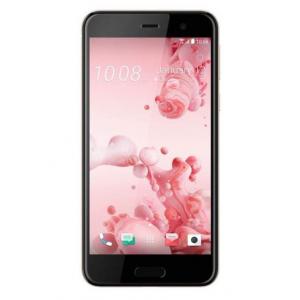Flash firmware on HTC Ocean Life
Mobiles >> HTC >> HTC Ocean Life| Specifications | Reviews | Secret codes |
| Unlock phone | Root phone |
| Backup | Flash Firmware | Screenshot |
How to flash HTC Ocean Life?
Why reinstall the firmware?
Errors start to appear in the operating system.
Some installed applications do not open.
Many programs from the Play Market do not work.
The phone restarts by itself for no reason.
The phone began to work slowly.
The OS does not match the system requirements of the smartphone.
Where can I find the firmware?
On the official website of your phone manufacturer.
On sites where developers post custom or official OS.
What should be done before installing the firmware?
Create a backup copy of user data and transfer it to your computer.
Insert your SD card into your phone. It must have enough memory to fit the firmware.
Find information about your smartphone model.
Fully charge your device. If the battery runs out during the firmware, the device will no longer turn on.
Download archive with Firmware. Place it on the SD card.
Installing TWRP Recovery
Install the Official TWRP App via the Play Market. And run this application.
When you start the application for the first time, you must agree to install a new firmware and all the risks associated with this, as well as agree to grant the application Superuser rights and click the 'OK' button.
After moving to the next screen, you need to select the 'TWRP FLASH' item and give the application root rights.

On the main screen of the application, select 'Select Device', and find your phone model.
After selecting a device, the application will direct the user to a web page to download the appropriate modified recovery environment image file. Download the suggested *.img file.
After downloading the image file, return to the main screen of the Official TWRP App and press the 'Select a file to flash' button. Select the file downloaded in the previous step.
Press the 'FLASH TO RECOVERY' button and confirm your choice.
When the message 'Flash Completed Succsessfuly!' appears on the screen. Click the 'OK' button. The TWRP installation procedure is now complete.
Write the firmware to the SD card. Using a PC or laptop card reader.
Insert a SD memory card into the phone.
To reboot into recovery, you need to use a special item in the Official TWRP App menu, accessible by pressing the button with three stripes in the upper left corner of the main screen of the application. We open the menu, select the 'Reboot' item, and then click on the 'REBOOT RECOVERY' button. The phone will reboot into the recovery environment automatically.
Firmware via TWRP

Before flashing, it is recommended to clear the 'Cache' and 'Data' sections. This will delete all user data from the device, but avoid a wide range of software errors and other problems. You must press 'WIPE' on the main screen.
Now you can start flashing. Click the 'Install' button.

On the file selection screen, at the very top there is a 'Storage' button for selecting an SD card.
Select the location where the files were copied. Press the 'OK' button.

Select the firmware file and click on it. A screen opens with a warning about possible negative consequences, you need to check the item 'Zip signature verification', which will avoid using corrupted files when writing to the phone's memory sections.
The procedure for writing files to the phone's memory will begin, accompanied by logging and filling in the progress bar.
The completion of the firmware installation procedure is indicated by the inscription 'Successful'.
Summary: Colors: Blue, Black, White, Pink; Weight: 148g (Unofficial); Type: Super Clear LCD Capacitive Touch Screen (Bezel-less Display); Display Colors: 16M Colors; Size: 5.2 Inch (Also Have Secondary Display); Resolution: 1080 x 1920 pixels; Pixel Density: ~424 ppi; Protection: Corning Gorilla Glass, 2.5D Curved Glass; Primary: 16 MP (Expected Dual Camera); Flash: Yes; Video Recording: With 2160p (4K); Secondary: 16 MP (Expected Dual Camera); Camera Flash: Yes; Camera Features: PDAF Sensor, Gesture Shot, Autofocus, Face Beauty, Voice Capture, Smile detection, HDR, Face Detection, Touch focus, Low Light Mode, Pro Mode, OIS Sensor, Raw Mode, Auto HDR, Video Pic; Audio Playback: WAV, AAC ...
Comments, questions and answers on the flash firmware HTC Ocean Life
Ask a question about HTC Ocean Life




